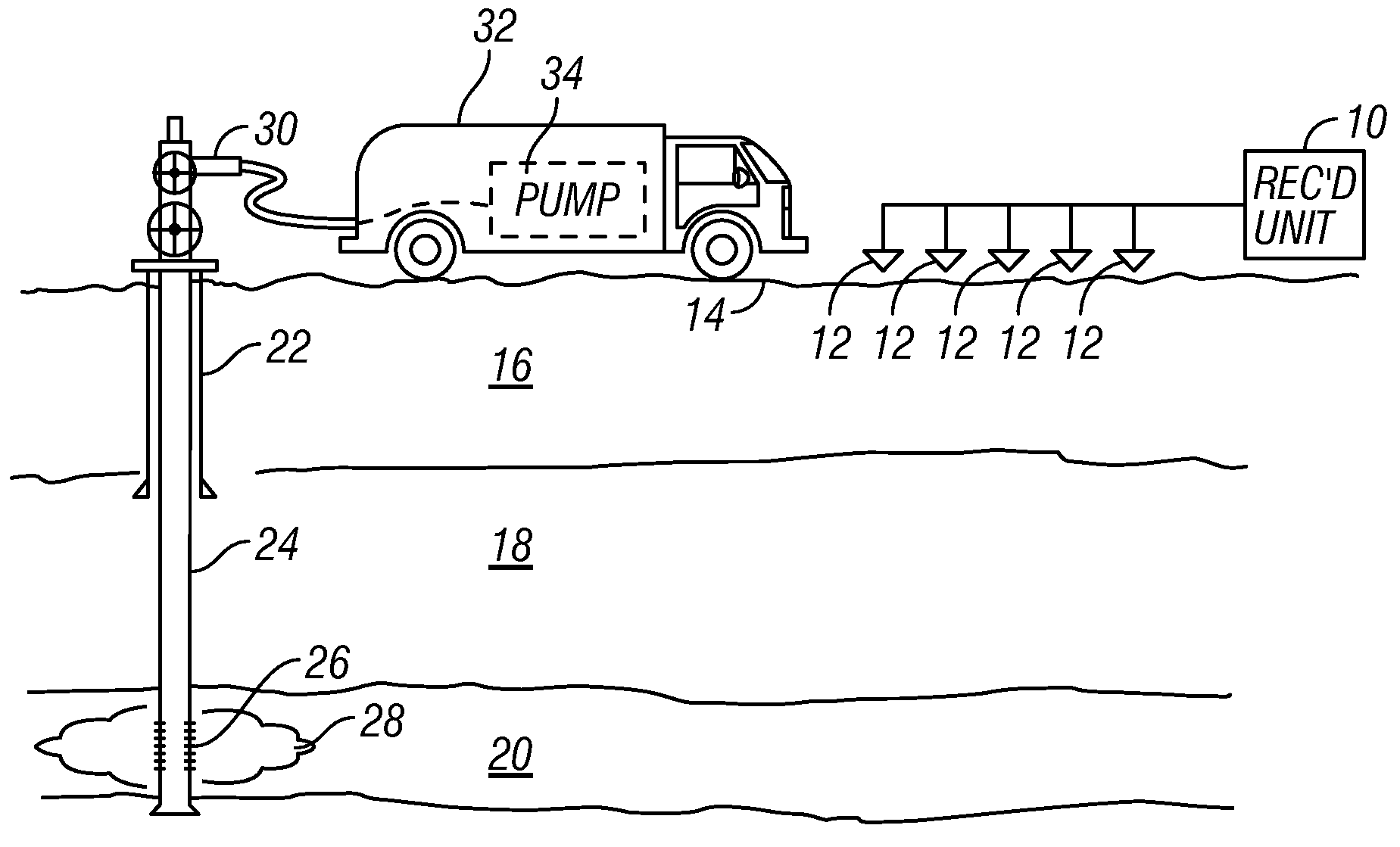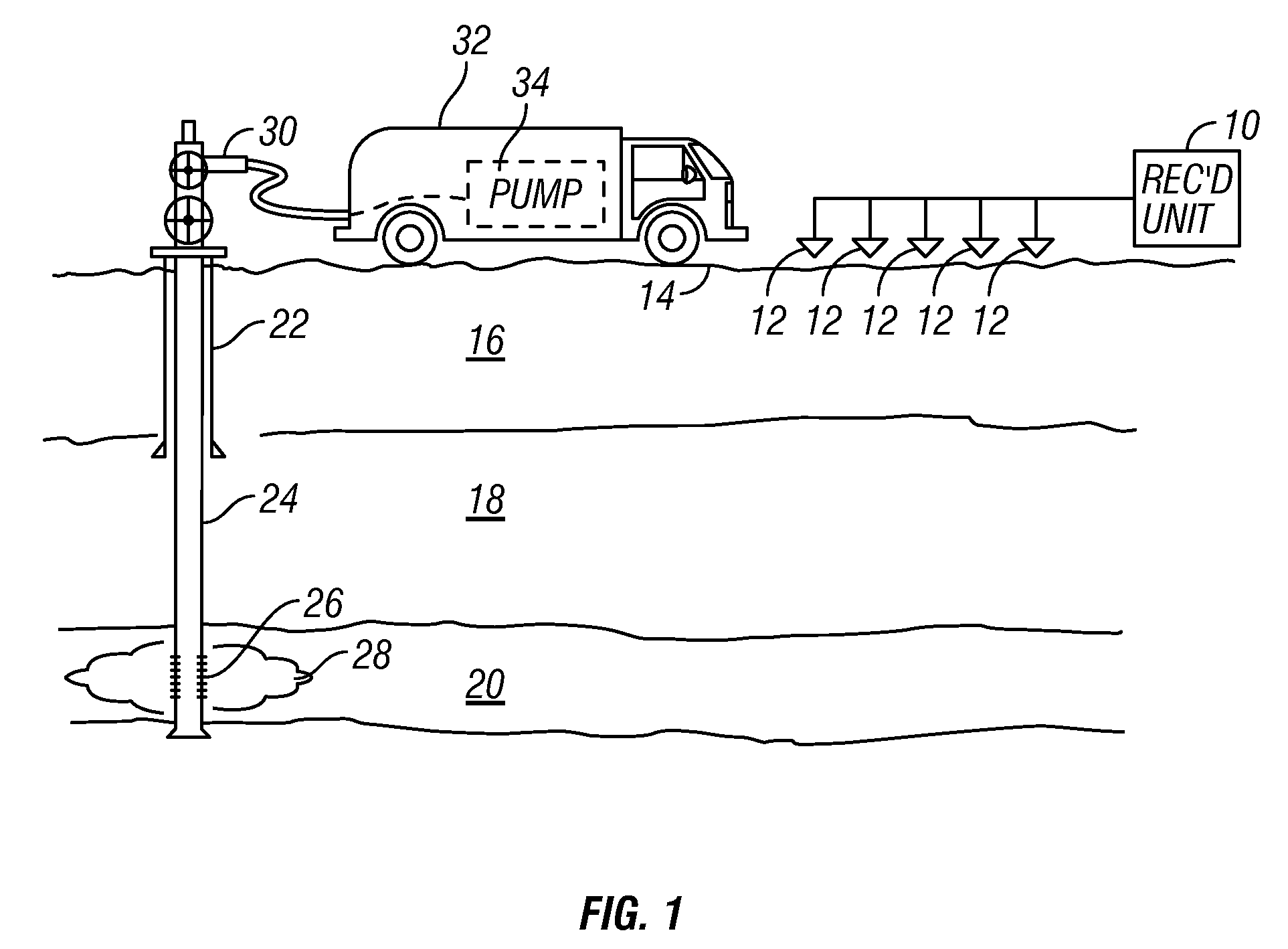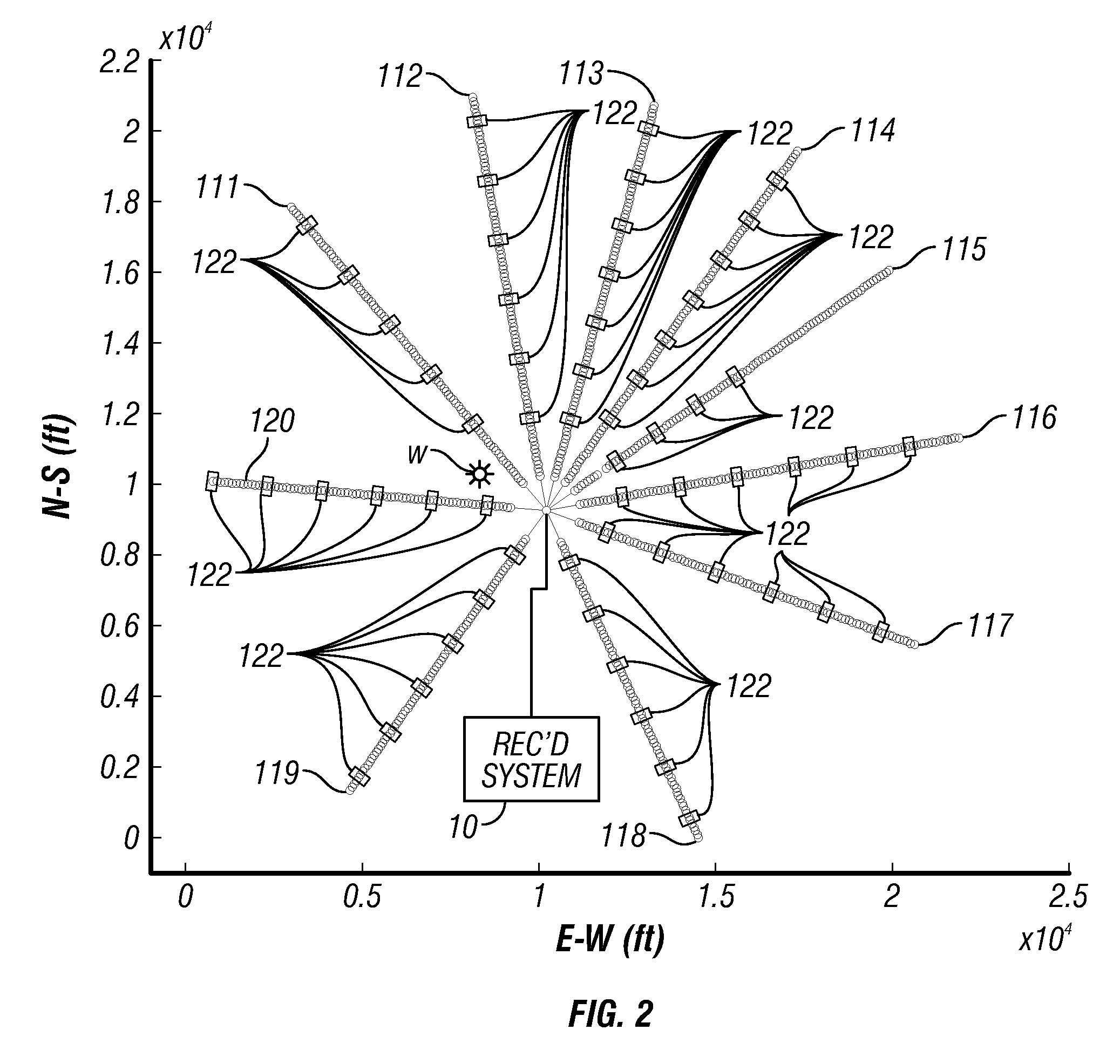Reservoir characterization from multicomponent microseismic data
a microseismic data and characterization technology, applied in the field of passive seismic detection of the earth's subsurface, can solve the problems of difficult inversion of seismic anisotropy
- Summary
- Abstract
- Description
- Claims
- Application Information
AI Technical Summary
Benefits of technology
Problems solved by technology
Method used
Image
Examples
Embodiment Construction
[0019]FIG. 1 shows seismic sensors as they would be used in one application of a method according to the invention. The example illustrated in FIG. 1 is associated with an application for passive seismic signal analysis known as “fracture monitoring.” It should be clearly understood that the application illustrated in FIG. 1 is only one possible application of a method according to the invention.
[0020]Each of a plurality of seismic sensors, shown generally at 12, is deployed at a selected position proximate the Earth's surface 14. In marine applications, the seismic sensors would typically be deployed on the water bottom in a device known as an “ocean bottom cable.” Additionally, the seismic sensors could be deployed in multiple shallow or deep boreholes in an arrangement known as a “buried array” The seismic sensors 12 in the present embodiment may be so called “three component” sensors. Three component sensors include three or more, typically mutually orthogonally oriented particl...
PUM
 Login to View More
Login to View More Abstract
Description
Claims
Application Information
 Login to View More
Login to View More - R&D
- Intellectual Property
- Life Sciences
- Materials
- Tech Scout
- Unparalleled Data Quality
- Higher Quality Content
- 60% Fewer Hallucinations
Browse by: Latest US Patents, China's latest patents, Technical Efficacy Thesaurus, Application Domain, Technology Topic, Popular Technical Reports.
© 2025 PatSnap. All rights reserved.Legal|Privacy policy|Modern Slavery Act Transparency Statement|Sitemap|About US| Contact US: help@patsnap.com



